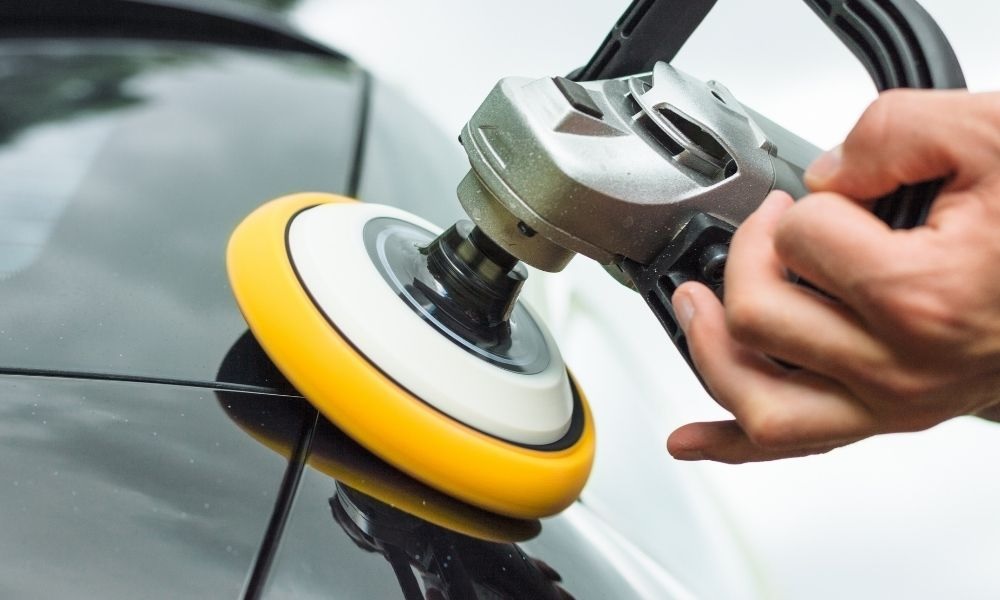Cleaning has evolved beyond the traditional mop and bucket, with an array of specialized tools available to cater to different surfaces and tasks. Among the contenders for the title of the ultimate cleaning companion are microfiber and foam pads. In this in-depth exploration, we will dissect the intricacies of these cleaning essentials, empowering you to make the right choice for your unique cleaning needs.
The Fabric Faceoff
Microfiber Pads: A Touch of Technology
Microfiber, a synthetic marvel, has become a staple in the cleaning industry. Composed of ultra-fine fibers, microfiber pads boast a high surface area, creating a texture that excels at attracting and trapping particles. The composition, often a blend of polyester and polyamide, gives microfiber its softness and durability.
The Science Behind Microfiber
Microfiber’s success lies in its ability to delve into microscopic crevices, ensuring a thorough removal of dirt and grime. This makes it an ideal choice for surfaces that demand precision cleaning, such as glass, stainless steel, or delicate electronic devices. The electrostatic charge generated by microfiber further enhances its dirt-attracting capabilities, making it a formidable adversary against dust.
Absorbency Mastery
In the battle of absorbency, microfiber emerges as the undisputed champion. The tiny fibers create a capillary action, swiftly absorbing liquids and spills. This quality makes microfiber pads indispensable for tasks that involve spills on hard floors or surfaces where moisture control is paramount.
Foam Pads: The Resilient Workhorse
Foam pads, constructed from porous materials like polyurethane foam, offer a different approach to cleaning. The porous structure provides a cushiony texture, contributing to the pad’s durability and versatility.
The Durability Quotient
Foam pads are built to withstand rigorous use, making them the go-to option for heavy-duty cleaning tasks. Whether you’re dealing with stubborn stains on floors or tackling grime on outdoor surfaces, foam pads can handle the challenge with resilience.
Surface Agnosticism
Unlike microfiber, foam pads are less surface-sensitive, making them suitable for a broader range of cleaning applications. From tiles and hardwood floors to outdoor patios, foam pads adapt to various surfaces, making them a versatile choice for those seeking a multi-functional cleaning tool.
Navigating Cleaning Challenges
Surface Sensitivity and Cleaning Tasks
Microfiber’s Gentle Touch
Microfiber’s soft and non-abrasive nature makes it ideal for surfaces that require extra care. It’s the preferred choice for cleaning glass, touchscreen devices, and polished surfaces. The meticulous cleaning power ensures a streak-free finish without the risk of scratches or damage.
Foam’s Durable Embrace
When faced with tough cleaning challenges, foam pads rise to the occasion. Their durability and abrasive texture make them suitable for surfaces that can withstand a more robust cleaning approach. Tiles, grout, and outdoor surfaces benefit from the sturdy performance of foam pads.
Absorbency Matters
Microfiber’s Swift Absorption
In scenarios where rapid liquid absorption is crucial, microfiber pads shine. Spills on kitchen floors, bathroom tiles, or any surface where quick moisture control is essential become effortless tasks with the absorbent capabilities of microfiber.
Foam’s Controlled Moisture
While foam may not match the absorbency of microfiber, it offers controlled moisture application. This characteristic makes foam pads suitable for tasks where precise liquid application is necessary, such as applying cleaning solutions to specific areas without oversaturation.
Beyond the Cleaning Surface
Washability and Reusability
Microfiber’s Laundering Elegance
Microfiber pads often win the convenience contest when it comes to maintenance. Many microfiber pads are machine washable, allowing for easy cleaning and hassle-free reuse. Following manufacturer guidelines ensures the longevity and effectiveness of microfiber pads. (See Also: Does Clay Bar Remove Scratches? Unveiling the Truth about Automotive Detailing)
Foam’s Enduring Legacy
While foam pads may pose a greater challenge when it comes to cleaning, their durability compensates for the effort. With proper care and occasional hand cleaning, foam pads can have a longer lifespan compared to some microfiber counterparts. This durability contributes to their cost-effectiveness over time.
Expert Tips for Maximizing Microfiber and Foam Pad Performance
When it comes to cleaning with microfiber and foam pads, mastering a few expert tips can elevate your cleaning game to a whole new level. These tried-and-true techniques will help you make the most of your chosen pads, ensuring efficiency, longevity, and outstanding results.
1. Rotate Your Pads Regularly
To extend the life of your microfiber and foam pads, it’s crucial to rotate them regularly. This simple practice ensures even wear and tear, preventing one side from bearing the brunt of cleaning tasks. Whether you’re tackling spills or scrubbing surfaces, rotate your pads to maintain optimal performance.
2. Choose the Right Cleaning Solution
The choice of cleaning solution can significantly impact the effectiveness of your pads. For microfiber, opt for a mild detergent or a specialized microfiber cleaner to preserve its intricate fibers. Foam pads, being more robust, can handle a broader range of cleaning solutions, but always check for compatibility to avoid any damage.
3. Use Microfiber for Dusting and Polishing
Microfiber’s electrostatic properties make it a superb choice for dusting and polishing surfaces. Use a dry microfiber pad for dusting to capture and trap particles effectively. For polishing, lightly dampen the microfiber pad with a water-based cleaner to achieve streak-free brilliance on glass, mirrors, and stainless steel.
4. Pre-Treat Stains with Foam Pads
When dealing with stubborn stains, leverage the abrasiveness of foam pads for effective pre-treatment. Apply a suitable cleaning solution to the stained area and use a foam pad to gently scrub. The foam’s resilience ensures a thorough cleaning without causing damage, making it an excellent tool for tackling challenging spots.
5. Launder Microfiber Pads Thoughtfully
To maintain the absorbency and effectiveness of microfiber pads, adopt a thoughtful laundering approach. Avoid using fabric softeners as they can leave residues that hinder microfiber’s performance. Wash microfiber pads separately, and refrain from using high heat, opting for a gentle cycle to preserve the integrity of the fibers.
6. Check Foam Pads for Wear and Tear
Regularly inspect foam pads for signs of wear and tear, such as fraying or deterioration. Replace pads that show significant damage to ensure optimal cleaning performance. Being proactive in replacing foam pads will prevent any scratches or damage to surfaces caused by worn-out pads.
7. Tailor Your Pad to the Surface
Consider the nature of the surface you’re cleaning and choose your pad accordingly. Microfiber pads excel on delicate surfaces, while foam pads prove their worth on more durable and resilient areas. Adapting your pad choice to the surface ensures effective cleaning without compromising the integrity of your belongings.
8. Allow Pads to Dry Completely
After use and cleaning, make sure both microfiber and foam pads are thoroughly dry before the next cleaning session. Damp pads not only compromise cleaning efficiency but can also harbor bacteria and mold. Air-dry or use low heat to preserve the quality of your pads and promote a hygienic cleaning routine. (See Also: How to Remove Duct Tape Residue from Car Interior: Ultimate Guide)
9. Store Pads Properly
Store your cleaning pads in a clean, dry place to prevent the growth of mold and mildew. Consider breathable storage options that allow air circulation, ensuring your pads remain fresh and ready for action. Proper storage contributes to the longevity of both microfiber and foam pads.
10. Experiment with Pad Combinations
For comprehensive cleaning, don’t be afraid to experiment with pad combinations. Pair a microfiber pad for initial dusting and a foam pad for deeper cleaning. This dynamic duo can tackle a range of tasks, providing a thorough and efficient cleaning experience.
Incorporating these expert tips into your cleaning routine will transform your microfiber and foam pad experience. From maximizing absorbency to enhancing durability, these strategies will unlock the full potential of your cleaning arsenal, making your cleaning endeavors more effective and enjoyable.
FAQs: Navigating the Microfiber Vs. Foam Pads Maze
Cleaning dilemmas often lead to questions about the best tools for the job. When it comes to microfiber and foam pads, curiosity abounds. Let’s address some frequently asked questions to demystify these cleaning essentials and help you make informed choices for your household.
1. Are Microfiber Pads Safe for All Surfaces?
Absolutely! Microfiber pads are safe for a wide range of surfaces, including glass, electronics, and delicate finishes. Their soft and non-abrasive nature makes them an excellent choice for tasks that require a gentle touch, ensuring your surfaces stay scratch-free.
2. Can Foam Pads Handle Tough Stains?
Indeed. Foam pads are designed to tackle tough stains effectively. Their porous and resilient structure allows for more aggressive scrubbing without causing damage. Foam pads are particularly useful for surfaces like tiles and outdoor areas where a more robust cleaning approach is required.
3. How Often Should I Rotate Cleaning Pads?
To maintain optimal performance, it’s advisable to rotate your cleaning pads regularly. Consider flipping or turning your pads after each use or whenever you notice uneven wear. This simple practice ensures that both sides of the pad get equal exposure to cleaning tasks, prolonging their lifespan.
4. Can I Use Microfiber Pads for Dusting?
Certainly! Microfiber pads excel at dusting due to their electrostatic properties. The tiny fibers attract and trap dust particles, providing an efficient and thorough dusting experience. Dry microfiber pads are ideal for this task, ensuring a clean and dust-free environment.
5. Do Foam Pads Absorb Liquids Well?
While not as absorbent as microfiber, foam pads still offer decent moisture retention. They are suitable for tasks that require controlled liquid application rather than rapid absorption. Foam pads are particularly useful for cleaning solutions or situations where you need to manage moisture carefully.
6. How Should I Launder Microfiber Pads?
Laundering microfiber pads requires a thoughtful approach. Avoid using fabric softeners as they can leave residues that hinder performance. Wash microfiber pads separately to prevent lint transfer from other fabrics. Opt for a gentle cycle and air-dry or use low heat to preserve the integrity of the microfiber fibers.
7. Can I Use Foam Pads on Delicate Surfaces?
Exercise caution when using foam pads on delicate surfaces, as their more abrasive nature may cause scratches. Foam pads are better suited for robust cleaning tasks on durable surfaces like tiles, grout, or outdoor areas. For delicate surfaces, opt for the gentler touch of microfiber. (See Also: Will 70 Isopropyl Alcohol Damage Car Paint? Exploring the Effects and Preventive Measures)
8. Are These Pads Environmentally Friendly?
Both microfiber and foam pads can be environmentally friendly, depending on their composition. Look for eco-friendly options made from sustainable materials. Additionally, the durability and washability of these pads contribute to their eco-friendly credentials by reducing the need for disposable cleaning materials.
9. Can I Mix and Match Microfiber and Foam Pads?
Certainly! Experimenting with different pad combinations can enhance your cleaning routine. Consider using a microfiber pad for initial dusting and a foam pad for deeper cleaning. This dynamic duo can provide a comprehensive and efficient cleaning experience, adapting to various tasks seamlessly.
10. How Should I Store Cleaning Pads?
Store your cleaning pads in a clean, dry place to prevent mold and mildew growth. Choose breathable storage options that allow air circulation, ensuring your pads remain fresh and ready for use. Proper storage practices contribute to the longevity of both microfiber and foam pads.
Navigating the world of cleaning pads doesn’t have to be daunting. These FAQs offer valuable insights to help you make informed decisions, ensuring your cleaning routine is efficient, effective, and tailored to your specific needs.
Making Your Decision
In the grand showdown of microfiber vs. foam pads, there is no outright winner. Your choice depends on a myriad of factors, including the surfaces you clean, the nature of the dirt or stains, and your personal preferences.
Understanding the strengths and weaknesses of microfiber and foam empowers you to make an informed decision tailored to your specific cleaning needs. Perhaps you’ll find a place for both in your cleaning arsenal, each serving a unique purpose in different scenarios.
So, the next time you embark on a cleaning spree, armed with your chosen pad, revel in the knowledge that you’ve made a conscious decision based on the specific demands of the task at hand. Whether it’s the delicate caress of microfiber or the resilient embrace of foam, cleaning just became a more intentional and satisfying endeavor.



